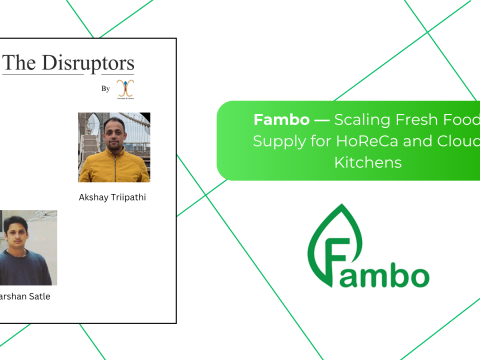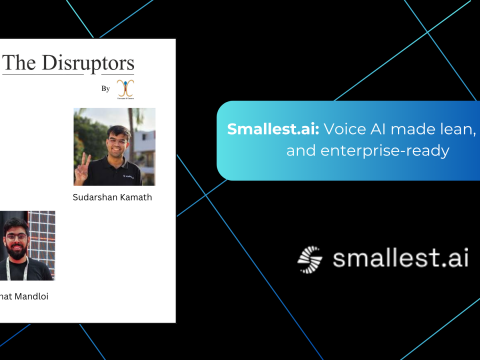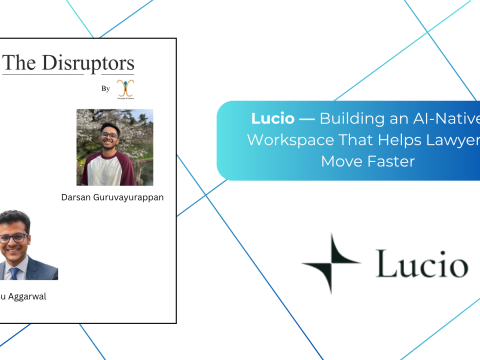- Have any questions?
- [email protected]
The Disruptor: How ReCharkha is Weaving Plastic Waste into Livelihoods

Mastering the Art of Persuasion: A Deep Dive into “Influence: The Psychology of Persuasion” by Robert B. Cialdini
August 13, 2025
Unveiling the Mastery of Legal Advocacy: A Deep Dive into “The Art of a Lawyer” by B. Malik
August 20, 2025In an age when “sustainability” is equal parts marketing and mission, ReCharkha is a social-first maker that turns the most ubiquitous urban waste—plastic wrappers and film—into handcrafted utility products. The result: circular-material design, new livelihoods for artisans, and a brand that sits at the intersection of craft and climate.
Quick facts
- What: A Pune-based upcycling social enterprise that converts plastic waste into yarn and handwoven products (mats, bags, home goods).
- Founder / origin: Founded by Amita Deshpande, who left a corporate/tech path to build a craft-driven circular-economy venture rooted in Indian textile traditions.
- Core mission: Divert post-consumer plastic (wrappers/films) into durable, designed goods while creating dignified, local work opportunities for artisans.
As a journalist — the story in plain terms
ReCharkha began as a straightforward idea: the waste we throw away is often a raw material in disguise. Founder Amita Deshpande leaned into traditional spinning/weaving approaches (a modern take on the charkha idea) and industrially appropriate processing to transform flexible plastic film into re-spun yarn. That yarn is then handwoven or craft-processed into mats, market bags and lifestyle products sold through direct channels and events. The brand narrative is simple and compelling: refuse → raw material → craft → product.
What stands out is the mix of low-tech craft sensibility with product design: the pieces look contemporary, durable, and suited for daily use (not just “eco décor”). By being useful and attractive, the products sidestep a common trap of recycled goods—limited appeal—while keeping the social mission visible.
As an analyst — market fit and leverage
ReCharkha sits in three growing market currents:
- Circular consumer goods: Consumers are paying a premium for durable, traceable, sustainable goods—especially in urban Indian markets.
- Corporate & CSR sourcing: Companies seeking measurable plastic-offset programs and circular-supply partnerships can use products like ReCharkha’s as tangible CSR outcomes.
- Government & institutional procurement: Institutional contracts for mats, carry-bags, or community programs can provide steady demand.
The defensible advantage is twofold: a vertically integrated upcycle process (material collection → conversion → crafts) and a mission-driven artisan base that supports provenance storytelling. To scale, the startup must balance unit economics (processing costs of plastic film into yarn) with consistent quality control and reliable supply of raw plastic feedstock.
As an investor — why ReCharkha merits attention (and what to watch)
Why it’s investable:
- Impact × commerce. The model addresses plastic pollution and livelihoods together—two high-priority outcomes for impact investors.
- Differentiated brand. Products are positioned beyond novelty; they’re everyday items with strong story appeal.
- Pipeline potential. Partnerships with waste-aggregators, corporates (for bulk CSR purchases), hospitality (durable mats and furnishings), and D2C channels can create diversified revenue streams.
Risks / KPIs to track:
- Cost of goods sold for plastic-to-yarn conversion (is manual processing a bottleneck?).
- Raw-material sourcing (consistent, clean film/laminate streams).
- Unit economics at scale vs. handmade premium pricing.
- Retention & training of artisan workforce (quality & lead times).
- Channel diversification (B2B vs B2C mix, recurring orders).
A prudent investor would want to see pilots with institutional buyers and repeat corporate purchases that validate both volume and margins.
As an operator — scaling and operations playbook
To scale while preserving impact, an operator should focus on three levers:
- Feedstock partnerships. Tie up with local waste-collectors, malls, FMCG companies, or municipal waste programs to secure steady plastic film in exchange for responsible disposal or buyback programs.
- Hybrid processing. Invest in semi-automated shredding and extrusion-to-yarn equipment to reduce labour intensity on the material-prep side while keeping final craft assembly human-led (preserving livelihoods).
- Design & product R&D. Increase SKU depth for categories with repeat purchase potential (home, travel, corporate gifting), and develop co-branded lines for corporate partners.
Operational excellence—especially in QA, inventory management, and predictable lead times—will be key for B2B growth.
As an impact advocate — measuring what matters
ReCharkha’s impact is measured in two linked metrics:
- Material diverted from landfill (kg of plastic film upcycled annually).
- Economic uplift (number of artisans paid, average income improvements, hours of stable work).
If the brand publishes transparent impact dashboards (kg diverted, artisans trained, wages paid), it unlocks much stronger corporate and grant funding opportunities.
Challenges & suggested next steps
Challenges: variable quality of raw plastic, price competition from cheap virgin-material goods, and the chicken-and-egg problem of scaling production without guaranteed large orders.
Next steps to address those:
- Build multi-tier supply agreements (municipal + corporate + retail collection points).
- Run a pilot with a corporate buyer for a co-branded gifting line—this can cover initial scaling costs and create recurring demand.
- Explore micro-finance or blended-capital models that fund semi-automation while preserving worker roles.
Final take — why ReCharkha matters
ReCharkha is an example of how local craft traditions and circular design can solve global problems at human scale. It doesn’t promise an overnight industrial solution to plastic, but it demonstrates an economically viable, socially positive route: reuse the waste that’s otherwise costly to manage; create work where it’s needed; and sell well-designed products people will actually use.
This combination—design integrity, circular-material engineering, and a visible social purpose—is what qualifies ReCharkha as a true disruptor in the “waste → value” economy.





